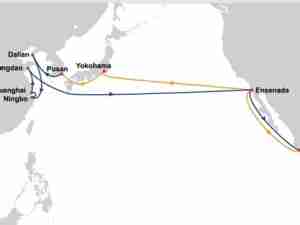But rising rates of piracy, drug smuggling, and political uncertainty in an area ravaged by civil wars and coups have made it a challenging destination for investors seeking to benefit from the massive resources.
The Gulf of Guinea runs from Guinea on Africa's northwestern tip to Angola in the south and includes Nigeria, Ghana, Ivory Coast, Democratic Republic of Congo, and Cameroon.
New EnergyFrontier?
Gulf of Guinea nations produce more than 3 million barrels of oil per day -- about 4 percent of the global total -- mostly for European and American markets, with the bulk coming from OPEC-member Nigeria (2.2 million bpd).
Smaller producers include Equatorial Guinea (300,000 bpd), Congo Republic (340,000 bpd), Gabon (230,000 bpd), Cameroon (55,000 bpd) and Ivory Coast (40,000 bpd).
While many of the region's producers are struggling to maintain output, oil companies believe the deep seas along the coast west of Nigeria could be a new frontier.
Ghana joined the ranks of West African oil producers in December 2010 and is expected to ramp up output to 120,000 bpd by July. Further out, Sierra Leone and Liberia hope offshore drilling will spell oil riches for them as well.
Washington estimates the Gulf of Guinea will supply about a quarter of U.S. oil by 2015 and has sent military trainers to the region to help local navies secure shipping.
What to watch:
- Oil leases: Gabon decided to invite direct bids for investments in remaining oil blocks rather than auction them and is preparing new legislation for the sector. Rocky labour relations in the country are a risk, with the main oil union striking in early April and slashing operations. French oil major Total revived its exploration efforts in the country, meanwhile, by purchasing stakes in three onshore licenses
- Exploration efforts: The results of exploration efforts by Tullow and Anadarko off Ghana, Sierra Leone, and Liberia could go a long way to defining the energy potential of the region.
Anadarko announced in March it found more high-quality oil off Ghana from its Teak-2 exploration well, the latest in a string of discoveries in the area. Hess Corp meanwhile said in April its exploration drill on its Paradise prospect encountered 370 feet of hydrocarbon, an early positive sign as it seeks commercial quantities.
- Security: The security of operations and shipping is a key risk, with piracy on the rise in the area. The security of operating contracts may also cause concern after Ghana's government said last year Exxon Mobil's reported deal to buy Kosmos' stake in the Jubilee field was illegal. Kosmos reported in August 2010 the deal was scrapped.
Cocoa Hub
Two-thirds of the world's cocoa comes from Gulf of Guinea nations, most of that from No.1 global producer Ivory Coast, and the rest from Ghana, Nigeria, Cameroon and others.
Cocoa output from the four producers during the 2009-10 season hit a three-year low below 2.4 million tonnes, but may rebound well over 2.5 million tonnes this season due to big increases in Ghana.
What to watch:
- Ivorian efforts to ramp up exports. Ivory Coast restarted port operations in late April after the end of a violent four-month power struggle. The country has since outpaced expectations by shipping 80,000 tonnes of cocoa between late-April and late-May -- a sign the sector is getting back on its feet. About a half a million tonnes of cocoa had backed up at the ports during the crisis. Ivory Coast's acting agriculture minister said in May he expects full-season output to meet pre-crisis forecasts of 1.3 million tonnes.
- Ghana's bumper harvest. No. 2 world cocoa grower Ghana is expecting official output to rebound this season to near 1 million tonnes, after it fell below 650,000 tonnes last season. Ghana officials have said the increa






